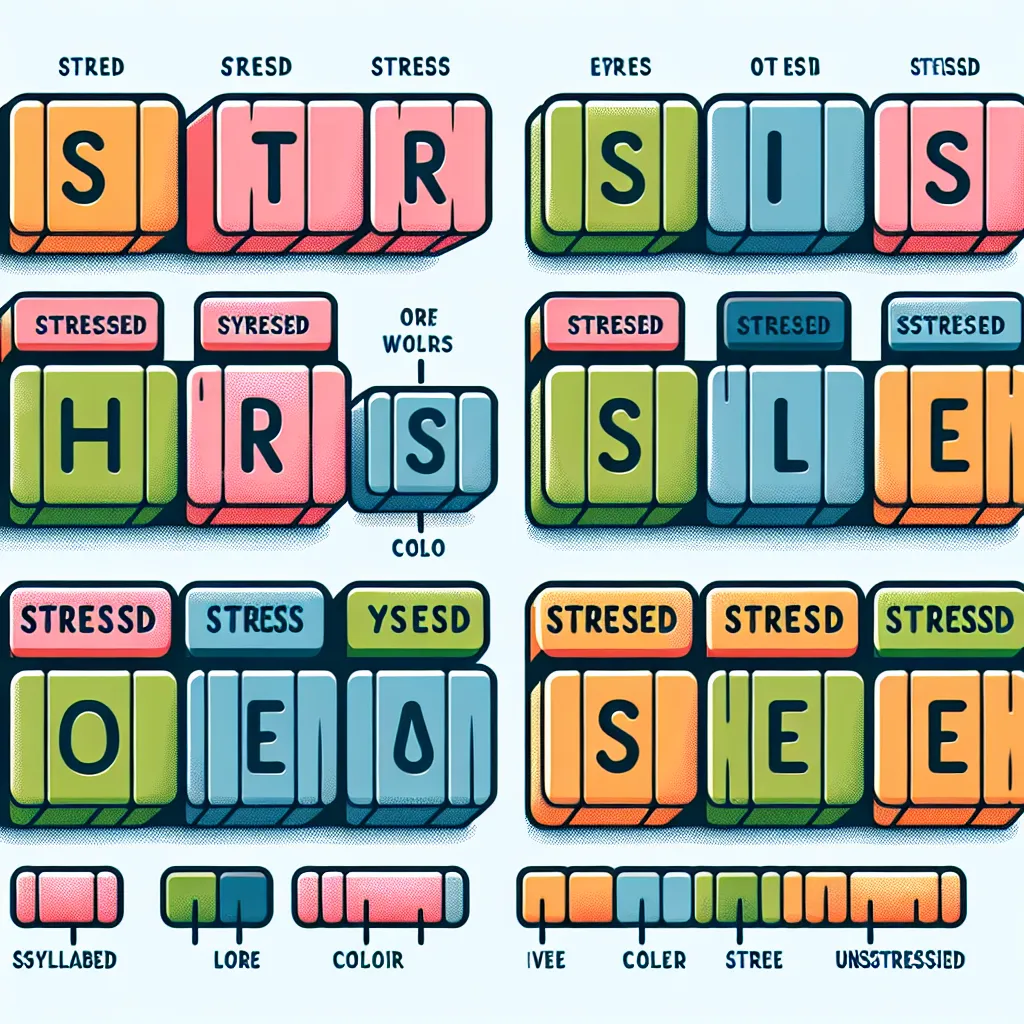Are you struggling with English pronunciation, particularly when it comes to stress placement? You’re not alone. Many language learners find this aspect of English particularly challenging. In this comprehensive guide, we’ll explore effective Pronunciation Tips For Correct Stress Placement, helping you speak English with greater confidence and clarity.
Understanding the Importance of Stress Placement in English Pronunciation
Stress placement is a crucial element of English pronunciation that can significantly impact your ability to communicate effectively. Proper stress placement not only enhances your overall fluency but also helps native speakers understand you more easily.
What is Stress Placement?
Stress placement refers to the emphasis given to certain syllables or words in spoken English. It involves pronouncing a particular part of a word or sentence with greater force or intensity than others. In English, stress can change the meaning of words and affect the rhythm of sentences.
 English Stress Placement
English Stress Placement
Why is Correct Stress Placement Important?
- Clarity: Proper stress placement makes your speech clearer and easier to understand.
- Meaning: In some cases, stress can change the meaning of words (e.g., ‘record’ as a noun vs. verb).
- Naturalness: Using correct stress patterns makes your English sound more natural and native-like.
- Listening comprehension: Understanding stress patterns helps you better comprehend native speakers.
Key Principles of English Stress Placement
To master stress placement, it’s essential to understand some fundamental principles:
- Word Stress: In English, most words have one primary stressed syllable.
- Sentence Stress: Content words (nouns, verbs, adjectives, adverbs) are usually stressed in sentences, while function words (articles, prepositions, pronouns) are typically unstressed.
- Stress Patterns: Many English words follow predictable stress patterns based on their syllable structure or suffix.
Effective Techniques for Improving Stress Placement
1. Listen and Imitate
One of the most effective ways to improve your stress placement is through active listening and imitation.
- Listen to native speakers, podcasts, or English language learning materials.
- Pay attention to which syllables or words are emphasized.
- Try to mimic the stress patterns you hear.
2. Practice with Stress-Changing Word Pairs
Some English words change their stress depending on whether they’re used as nouns or verbs. Practicing these pairs can help you internalize stress patterns:
- REcord (noun) vs. reCORD (verb)
- PERmit (noun) vs. perMIT (verb)
- CONduct (noun) vs. conDUCT (verb)
3. Use a Dictionary with Pronunciation Guide
Many online dictionaries provide pronunciation guides that indicate stress placement. Make it a habit to check and practice the correct stress when learning new words.
4. Utilize Stress-Marking Techniques
When taking notes or studying vocabulary, develop a system to mark stress:
- Capitalize stressed syllables: proNUNciAtion
- Use underlining: pronunciation
- Place a stress mark before the stressed syllable: pro’nuncia’tion
5. Practice with Rhythm and Music
English has a natural rhythm largely influenced by stress patterns. Engage with this rhythm through:
- Clapping or tapping the stressed syllables in words and sentences
- Learning and reciting English poems or song lyrics
- Using jazz chants, which are designed to practice rhythm and stress
 English Pronunciation Practice
English Pronunciation Practice
Common Mistakes in English Stress Placement
Be aware of these common pitfalls:
- Stressing every word equally: Remember, not all words in a sentence receive equal stress.
- Misplacing stress in multisyllabic words: For example, saying “de-VE-lop” instead of “de-ve-LOP.”
- Ignoring stress shifts in word families: For instance, “PHOtograph” vs. “phoTOgraphy.”
- Overlooking stress in compound words: In most cases, the stress is on the first word (e.g., BLACKboard, not blackBOARD).
The International Phonetic Alphabet (IPA) and Stress Placement
Familiarizing yourself with the International Phonetic Alphabet can greatly aid in mastering stress placement. The IPA uses a specific symbol (ˈ) before stressed syllables. For example:
- Pronunciation: /prəˌnʌnsiˈeɪʃən/
- Development: /dɪˈveləpmənt/
Learning to read and use IPA can provide a more precise understanding of stress patterns in English words.
10 Commonly Mispronounced Words with Tricky Stress Placement
- COLleague (not colLEAGUE)
- DEvelop (not deveLOP)
- PHOtography (not phoTOgraphy)
- COMfortable (not comFORTable)
- INteresting (not intereSTING)
- VEGetable (not vegeTABle)
- CATegory (not cateGORy)
- NECessary (not necesSARY)
- TEMperature (not temperaTURE)
- PREfer (not preFER)
Practice these words regularly, paying close attention to their correct stress patterns.
Conclusion: Mastering Stress Placement for Better English Pronunciation
Improving your stress placement is a journey that requires consistent practice and attention to detail. By incorporating these pronunciation tips for correct stress placement into your English learning routine, you’ll gradually develop a more natural and accurate pronunciation. Remember, progress takes time, so be patient with yourself and celebrate small improvements along the way.
For more in-depth guidance on improving your English pronunciation, check out our article on how to improve pronunciation using phonetic exercises. Additionally, if you’re looking to tackle specific pronunciation challenges, our guide on how to master pronunciation of difficult English consonants offers valuable insights and practice techniques.
Keep practicing, stay motivated, and watch as your English pronunciation transforms, bringing you closer to your language learning goals!




